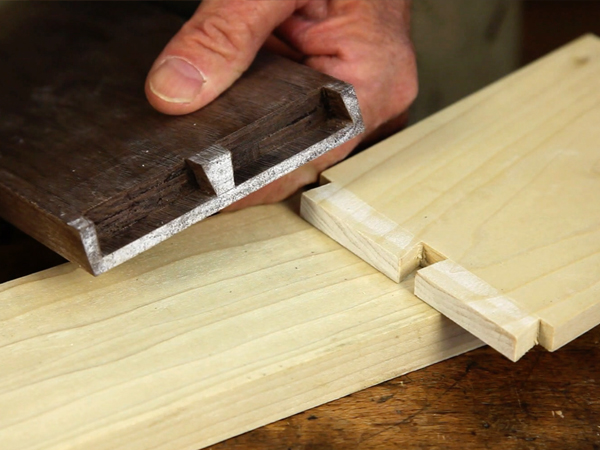
In this episode of Hand Cutting Dovetails series, Ernie continues his lesson about how to make drawers using half-blind dovetails. You’ll learn how to transfer the pin layout to the tail boards and how to saw and chisel out the sockets. Ernie shows you how to scribe the layout of the pins. He then uses a short back saw to cut along the socket layout lines and chops the waste out with a chisel. He finishes this video by demonstrating a dry assembly of the drawer and how to correct the fit of the pins and tails. Ernie uses a dovetail chisel to change the size of the tail sockets.
The dovetail may be the most iconic joint in woodworking. It is the perfect marriage of form and function – both strong and attractive. In this series, Ernie Conover clearly demonstrates how to lay out, cut, and assemble the most popular types of dovetail joints.
Watch: How to Lay Out Pins for Half-Blind Dovetails
Watch more videos from the Hand Cutting Dovetails Series:
Hand-Cut Dovetail Series Episode Listing:
1. Introduction: Why hand cut dovetails? A brief history of the joint.
4. Through Dovetails – Making the Pins – Sawing
5. Through Dovetails – Making the Pins – Chiseling the Waste
6. Through Dovetails – Transferring the Layout
7. Through Dovetails – Sawing the Tail Boards
8. Through Dovetails – Trial Fit, Gluing, and Clamping
9. Through Dovetails – Modifying Pin Widths and Layouts for Box Lids and Drawers
10. Half-Blind Dovetails – Overview
11. Half-Blind Dovetails – Layout Pins
12. Half-Blind Dovetails – Sawing and Chiseling the Pins
13. Half-Blind Dovetails – Transferring the Pin Layout to the Tail Boards
14. Half-Blind Dovetails – Gluing and Clamping






